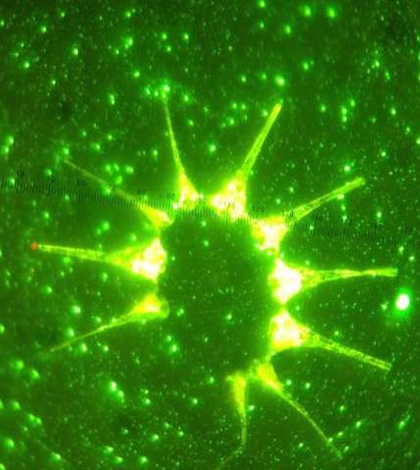Competing Phytoplankton Can Change Algal Bloom Characteristics

Fluorescence microscopic image showing phytoplankton and bacteria from algal blooms. (Credit: University of Southern California)
Phytoplankton, tiny plants no thicker than a piece of paper, have a huge role in the carbon cycle of the Earth, fixating half of the planet’s atmospheric carbon and converting it to organic forms other creatures can utilize. Although phytoplankton have such a large role in the carbon cycle, little is known about which are the primary drivers of carbon fixation, or whether the dominant species changes over time.
In a release from the University of Southern California, researchers shared their efforts to use genetic analysis to tease apart which phytoplankton in algal blooms are the main movers in the carbon fixation and transport processes. Studying algal blooms over a five-month period, scientists were able to determine that the dominant phytoplankton species can change from day to day, with many species competing with one another and changing the characteristics of blooms themselves.
Researchers collected water samples from the ocean in buckets, then analyzed the samples for ribosomal RNA from the phytoplanktons’ chloroplasts. This approach was innovative, as previous attempts relied on microscopic identification of phytoplankton, which are far more difficult to distinguish by eye than by unique ribosomal RNA signature.
Top image: Fluorescence microscopic image showing phytoplankton and bacteria from algal blooms. (Credit: University of Southern California)




0 comments